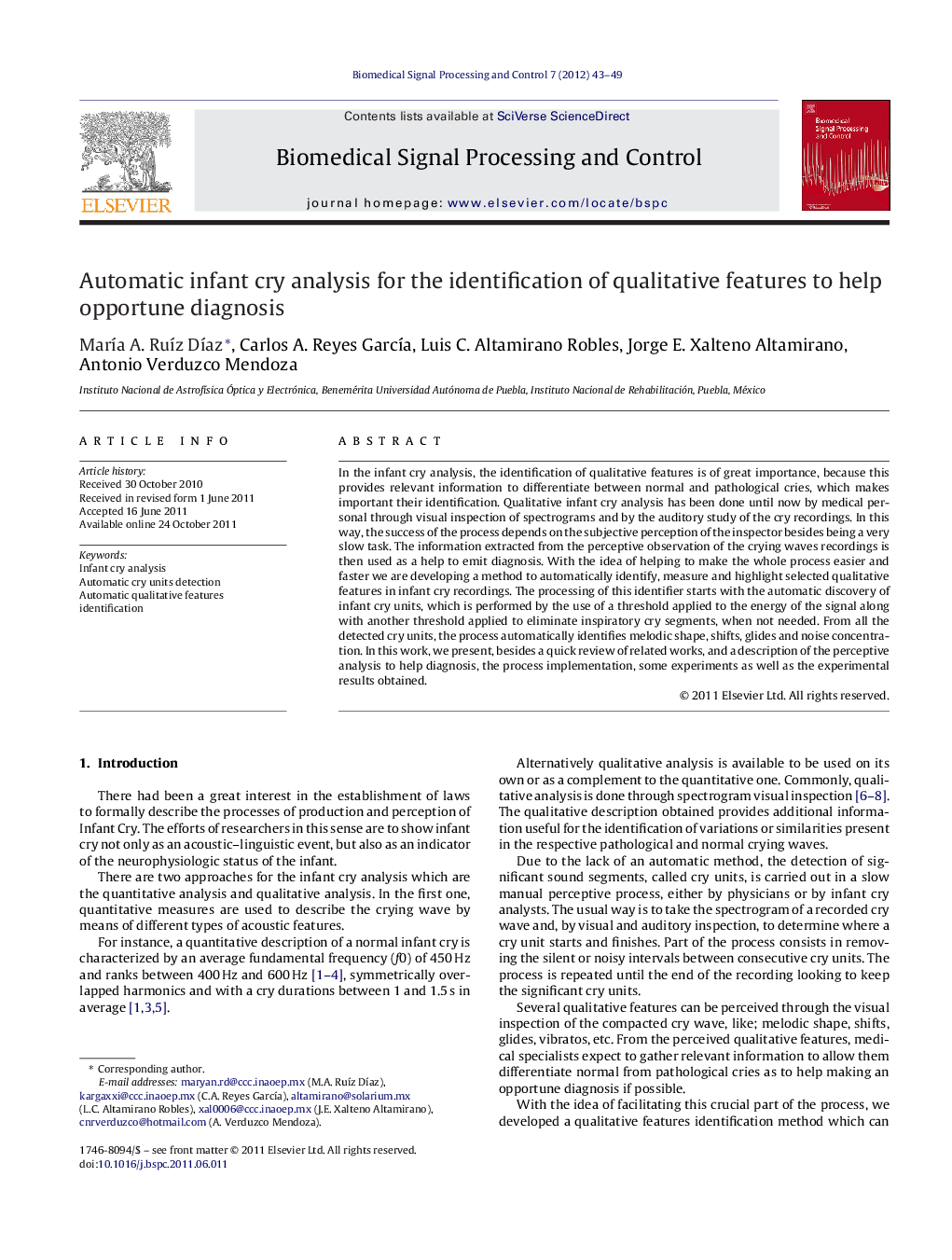| Article ID | Journal | Published Year | Pages | File Type |
|---|---|---|---|---|
| 557617 | Biomedical Signal Processing and Control | 2012 | 7 Pages |
In the infant cry analysis, the identification of qualitative features is of great importance, because this provides relevant information to differentiate between normal and pathological cries, which makes important their identification. Qualitative infant cry analysis has been done until now by medical personal through visual inspection of spectrograms and by the auditory study of the cry recordings. In this way, the success of the process depends on the subjective perception of the inspector besides being a very slow task. The information extracted from the perceptive observation of the crying waves recordings is then used as a help to emit diagnosis. With the idea of helping to make the whole process easier and faster we are developing a method to automatically identify, measure and highlight selected qualitative features in infant cry recordings. The processing of this identifier starts with the automatic discovery of infant cry units, which is performed by the use of a threshold applied to the energy of the signal along with another threshold applied to eliminate inspiratory cry segments, when not needed. From all the detected cry units, the process automatically identifies melodic shape, shifts, glides and noise concentration. In this work, we present, besides a quick review of related works, and a description of the perceptive analysis to help diagnosis, the process implementation, some experiments as well as the experimental results obtained.
► Qualitative feature analysis from infant cry allows the emission of early diagnostic. ► We developed a method which can automatically detect infant cry units from recordings. ► Thresholds allow removing inspiratory sounds and automatically detecting unit cries. ► We developed the dodecagram method which can automatically identify the melody shape. ► Fundamental frequency values allow to identify shifts, glides and noise concentrations.
